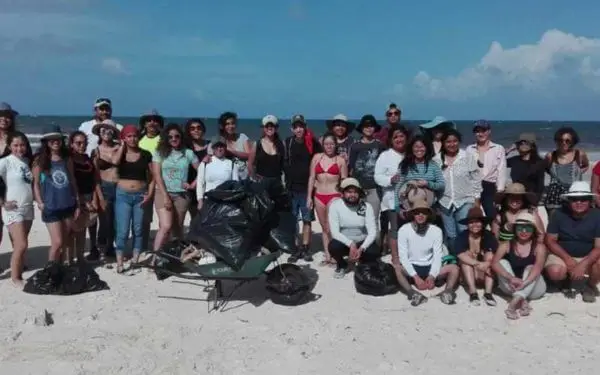With its white sandy shores and expansive coral reefs, it’s no surprise that the Mexican Caribbean is a popular tourist destination. However, tourists aren’t the only visitors that frequent the region. The Mexican Caribbean is home to several important sea turtle nesting beaches. Every year, from May to October, thousands of turtles – green, hawksbill, and the occasional leatherback – return to these beaches to lay their eggs.
Turtle nesting season is a one of the most spectacular times in the Mexican Caribbean. Coastal communities gear up for the turtles’ arrival, anxious to receive these special visitors. However, ongoing coastal development has made it more difficult for turtles to find quiet, uninhabited beaches to lay their eggs. All of the turtle species in the area are on the IUCN Red List of Threatened Species, making it even more important that this nesting ritual takes place with the least amount of disturbance.
Thankfully, a number of community groups and businesses, including some of the hotels in the area, are doing their part to help the nesting turtles. Amigos de Sian Ka’an, one of our partners on the Mesoamerican Reef Tourism Initiative (MARTI), recently organized a beach cleanup within the Sian Ka’an Biosphere Reserve to prepare for the turtles’ arrival. A large number of volunteers from the community and other local organizations pitched in to remove plastic and other debris from the beach.

Nesting Beach Visitor Tips
You can also play an important role in protecting sea turtles, this World Oceans Day and every day! Here’s a few tips to keep in mind to help turtles and hatchlings when you’re in the Mexican Caribbean or visiting other nesting beaches:
- Don’t litter! When straws, plastic bags, fishing lines and other debris ends up in the ocean, it can be lethal to sea turtles and other marine life.
- Keep your distance! If you come across a nesting female on the beach, do not approach or touch her. When snorkeling or diving, do not swim towards sea turtles. Instead, watch them from a distance and do not attempt to touch them.
- Keep beaches obstacle free! Items such as sunbeds, nets, and kayaks can hinder a turtle’s journey up the beach. At the end of the day, remove any obstacles so that there is a clear path when the turtles come ashore to nest at night.
- Turn off the lights! Artificial lights can scare and disorient the turtles and hatchlings. Do not shine a flashlight or use the light on your mobile phone, and avoid using flash photography.
- Watch your step! Stay clear of known turtle nesting sites and be mindful of hatchlings if you’re on the beach at night.
- Leave your pets at home! Pets can scare the turtles, destroy nests, and attack hatchlings.
- Do not buy or consume turtle products. This includes turtle meat, eggs, and oil, as well as souvenirs made from turtle shells, such as jewelry, hair clips, or sunglasses.
To learn more about our work fostering sustainable tourism in the Mexican Caribbean, click here.
Free Sustainable Travel Tips List


 Written By:
Written By: 

